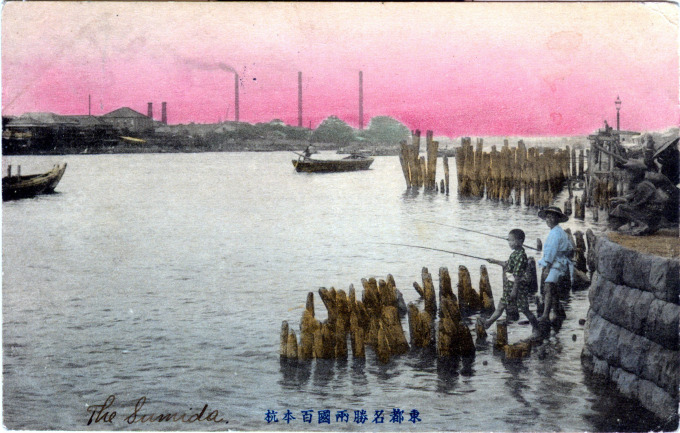“On the left bank of the river north of Ryogoku Bridge had stood a disorderly platoon of stakes known as Hyappongui (hundred stakes). They had been planted there to protect the bank at a point where there was a bend in the river.
“The stakes were portrayed by two great artists of the city, Hiroshige (1797-1858) and, memorably, by Kobayashi Kiyochika, who seemed to find in them a haphazard quality that symbolized the city of the past and stood in contrast to the order of the new urbanism.
“Koda Rohan referred to them in his essay Mizu no Tokyo [‘Waters of Tokyo’]. They were, he wrote, a favoured spot for anglers fishing for carp. The stakes disappeared along with the sandbanks when new banks were constructed for the Sumida in the 1910s.”
– Japanese Capitals in Historical Perspective: Place, Power and Memory in Kyoto, Edo and Tokyo, edited by Nicolas Fieve & Paul Waley, 2003
Hyappongui (100 Stakes), Sumida River, c. 1910.
1910s • Commerce • Transportation
Tagged with: Ryougaku Bridge, Sumida River
Please support this site. Consider clicking an ad from time to time. Thank you!


